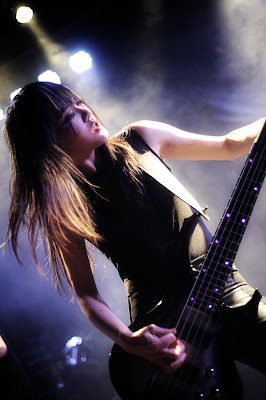There is also another reason I prefer primes, however. Focal length is not meant as a...foot substitute. In other words, you're not supposed to zoom in or out instead of walking toward or away from your subject. By doing that, you're changing the perspective - it's an entirely different photo! Zoom in and out has become the lazy man's/woman's habit. In addition, when you have to think of all that, you begin to lose sense of composition and framing - something that, especially for beginners, can be devastating.
 |
| I've often taken on professional assignments armed with a humble 50mm lens. Position is more important than focal length flexibility |
The key to great photos:
Learn to see the world as if you always do so through a viewfinder.
And this is easier to achieve if you are used to specific focal lengths.
One Lens Challenge
I challenge you to use one and one focal length only for a period of a week. If you have a prime, use only that. If you don't have a prime, choose one focal length of your zoom and use only that focal length. No cheating!
At the end of the week, go over the photos you took. Like them? Dislike them? Ask yourself why (in either case). More importantly, reflect on how the process of not being able to change lenses (or focal length) affected your choice of tripping the shutter or not.
Let me use as an example a discussion I had recently with a fellow photographer. He said, rather tongue-in-cheek though not entirely, "we have exposure bracketing and white balance bracketing, the next step is focus and focal length bracketing".
His words made me realize, how funny (and utterly insane) our photography would become if you could press the shutter button and have 7 different photos, ranging from 18mm to 200mm with 5 steps in between.
As I mentioned in the caption of the photo above, there's in fact a finite number of ways you can frame a photo in a way that is compositionally meaningful. Of course, to counter the argument I just made, unorthodox approaches sometimes can reveal something truly unique. But this is more the exception than the rule, and you need to be pretty experienced to achieve this - let's face it, not your average 18-300 superzoom user.
So yeah, why don't you try it out for a week and see how it goes? You might discover something about your photography you didn't know!


No comments:
Post a Comment